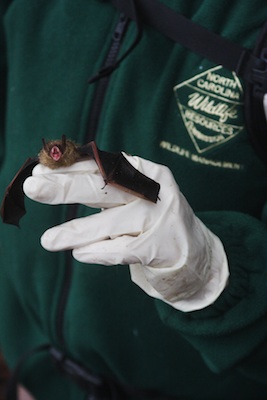The Southern Environmental Law Center and five other conservation groups issued the USFS a notice of intent to sue in July on the grounds that it ignored its own scientific findings suggesting that logging in certain areas could drastically harm the habitat and feeding grounds of four already endangered species, therefore violating the Endangered Species Act. If filed, the case will be heard in the U.S. District Court for the Western District of North Carolina.







 The deadly bat disease known as white-nose syndrome is probably present in Buncombe County, according to a new report from the N.C. Wildlife Resources Commission. The news raises the number of affected counties in Western North Carolina to four. Since its initial appearance in a New York cave in 2006. the fungal disease has killed bats at a startling rate. Biologists worry that mortality from the disease is so high, we may be witnessing an extinction event.
The deadly bat disease known as white-nose syndrome is probably present in Buncombe County, according to a new report from the N.C. Wildlife Resources Commission. The news raises the number of affected counties in Western North Carolina to four. Since its initial appearance in a New York cave in 2006. the fungal disease has killed bats at a startling rate. Biologists worry that mortality from the disease is so high, we may be witnessing an extinction event.